-
 Bitcoin
Bitcoin $108,270.9768
2.07% -
 Ethereum
Ethereum $2,489.8066
2.50% -
 Tether USDt
Tether USDt $1.0004
0.01% -
 XRP
XRP $2.2035
0.66% -
 BNB
BNB $661.6608
2.32% -
 Solana
Solana $150.6425
2.13% -
 USDC
USDC $0.9999
-0.01% -
 TRON
TRON $0.2810
0.90% -
 Dogecoin
Dogecoin $0.1645
3.05% -
 Cardano
Cardano $0.5743
4.91% -
 Hyperliquid
Hyperliquid $38.8419
-0.15% -
 Bitcoin Cash
Bitcoin Cash $504.3134
-2.64% -
 Sui
Sui $2.8096
4.35% -
 Chainlink
Chainlink $13.3095
2.21% -
 UNUS SED LEO
UNUS SED LEO $8.9469
0.33% -
 Avalanche
Avalanche $17.9231
3.93% -
 Stellar
Stellar $0.2340
0.74% -
 Toncoin
Toncoin $2.8458
3.21% -
 Shiba Inu
Shiba Inu $0.0...01158
3.47% -
 Litecoin
Litecoin $86.0738
1.94% -
 Hedera
Hedera $0.1507
2.99% -
 Monero
Monero $319.8544
2.31% -
 Polkadot
Polkadot $3.4081
1.95% -
 Dai
Dai $1.0000
0.01% -
 Bitget Token
Bitget Token $4.5645
0.91% -
 Ethena USDe
Ethena USDe $1.0002
0.00% -
 Uniswap
Uniswap $7.2959
5.27% -
 Aave
Aave $272.4623
2.90% -
 Pepe
Pepe $0.0...09680
2.96% -
 Pi
Pi $0.4955
0.78%
Detailed steps to transfer Bitcoin from Coinbase Pro to Gemini
Transferring Bitcoin from Coinbase Pro to Gemini requires careful steps: verify accounts, withdraw from Coinbase, monitor blockchain, and confirm receipt on Gemini.
Apr 06, 2025 at 09:56 am
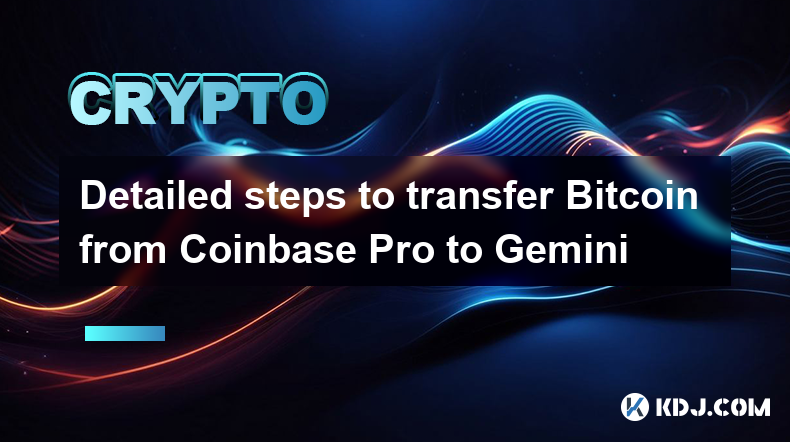
Transferring Bitcoin from Coinbase Pro to Gemini involves several steps that ensure the secure and efficient movement of your cryptocurrency. This process requires careful attention to detail to avoid common pitfalls such as incorrect addresses or insufficient fees. In this guide, we will walk you through the detailed steps to successfully transfer your Bitcoin from Coinbase Pro to Gemini, ensuring that you understand each part of the process. Whether you are a beginner or an experienced user, following these steps will help you manage your digital assets effectively.
Preparing for the Transfer
Before initiating the transfer, it's crucial to prepare adequately. This involves ensuring that your accounts on both platforms are fully verified and that you have a clear understanding of the fees involved. Start by logging into your Coinbase Pro account and navigating to the Bitcoin section to check your balance. Similarly, log into your Gemini account and ensure that you are ready to receive Bitcoin. It's also wise to check the current network fees on the Bitcoin blockchain, as these can affect the speed and cost of your transfer.
Step 1: Withdraw Bitcoin from Coinbase Pro
To begin the transfer, you need to withdraw Bitcoin from Coinbase Pro. Here's how you can do it:
- Navigate to the 'Portfolio' tab on Coinbase Pro.
- Select 'Withdraw' next to your Bitcoin balance.
- Choose 'Crypto Address' as the withdrawal method.
- Enter the amount of Bitcoin you wish to transfer.
- Copy the Bitcoin deposit address from your Gemini account and paste it into the 'Destination Address' field on Coinbase Pro.
- Review the transaction details, including the network fee, and confirm the withdrawal.
Step 2: Confirm the Withdrawal on Coinbase Pro
After entering the withdrawal details, Coinbase Pro will prompt you to confirm the transaction. This step is crucial as it ensures that you have entered the correct information. Double-check the destination address and the amount of Bitcoin you are sending. Once you are satisfied with the details, click on the 'Confirm Withdrawal' button. Coinbase Pro will then process your request, and you will receive a confirmation email once the withdrawal is initiated.
Step 3: Monitor the Transaction on the Blockchain
Once the withdrawal is confirmed, the Bitcoin will be sent to the Bitcoin blockchain. You can monitor the progress of your transaction using a blockchain explorer like Blockchain.com or BlockCypher. To do this, you will need the transaction ID (TXID) provided by Coinbase Pro. Enter the TXID into the blockchain explorer to track the status of your Bitcoin transfer. This step is important as it allows you to ensure that the transaction is progressing as expected and to identify any potential issues early.
Step 4: Receive Bitcoin on Gemini
Once the Bitcoin transaction is confirmed on the blockchain, it will appear in your Gemini account. Here's how to receive it:
- Log into your Gemini account and navigate to the 'Transfers' section.
- Click on 'Deposit into Exchange'.
- Select 'Bitcoin' as the cryptocurrency you want to deposit.
- The Bitcoin you transferred from Coinbase Pro should appear in your Gemini account once the transaction is fully confirmed on the blockchain.
Step 5: Verify the Transfer on Gemini
After the Bitcoin appears in your Gemini account, it's important to verify that the correct amount has been received. Check the transaction history on Gemini to ensure that the amount matches what you sent from Coinbase Pro. If everything looks correct, you can now use your Bitcoin on Gemini for trading or other purposes. If there are any discrepancies, contact Gemini's customer support immediately to resolve the issue.
Understanding Fees and Timing
When transferring Bitcoin between exchanges, it's important to understand the fees and timing involved. Coinbase Pro charges a withdrawal fee for sending Bitcoin to an external address, and the Bitcoin network also charges a transaction fee. These fees can vary based on network congestion and the priority you set for the transaction. The timing of the transfer can also vary, typically taking anywhere from 10 minutes to an hour, depending on the Bitcoin network's current load.
Security Considerations
Security is paramount when transferring cryptocurrencies. Always ensure that you are using a secure internet connection and that your accounts on both Coinbase Pro and Gemini are protected with strong, unique passwords and two-factor authentication (2FA). Never share your private keys or recovery phrases with anyone. Additionally, consider using a hardware wallet for storing your Bitcoin if you plan to hold it for an extended period, as this provides an extra layer of security against online threats.
Troubleshooting Common Issues
Sometimes, issues can arise during the transfer process. Here are some common problems and how to address them:
- Transaction not appearing on Gemini: If the Bitcoin does not appear in your Gemini account after a reasonable time, check the transaction status on the blockchain explorer. If the transaction is confirmed but not showing up, contact Gemini support.
- Incorrect address entered: If you accidentally entered the wrong address on Coinbase Pro, the Bitcoin will be sent to that address. In this case, you will need to contact the recipient to recover your funds, which can be challenging.
- Insufficient funds for fees: If your Coinbase Pro account does not have enough Bitcoin to cover the network fee, the transaction will fail. Ensure you have enough Bitcoin to cover both the amount you want to send and the fee.
Best Practices for Future Transfers
To ensure smooth and secure future transfers, consider the following best practices:
- Always double-check the destination address before confirming a withdrawal.
- Keep a small amount of Bitcoin in your exchange account to cover network fees.
- Use a blockchain explorer to monitor the progress of your transactions.
- Regularly update your security measures, including passwords and 2FA.
- Consider using a hardware wallet for long-term storage of your Bitcoin.
Common Questions Related to Transferring Bitcoin from Coinbase Pro to Gemini
Q: How long does it take to transfer Bitcoin from Coinbase Pro to Gemini?
A: The transfer time can vary, typically taking anywhere from 10 minutes to an hour, depending on the current load on the Bitcoin network.
Q: What fees are involved in transferring Bitcoin from Coinbase Pro to Gemini?
A: You will need to pay a withdrawal fee charged by Coinbase Pro and a network fee for the Bitcoin transaction. These fees can vary based on network congestion and the priority you set for the transaction.
Q: What should I do if the Bitcoin does not appear in my Gemini account after the transfer?
A: First, check the transaction status on a blockchain explorer using the TXID provided by Coinbase Pro. If the transaction is confirmed but not showing up in your Gemini account, contact Gemini's customer support for assistance.
Q: Is it safe to transfer Bitcoin between exchanges?
A: Yes, it can be safe if you follow security best practices, such as using strong passwords, enabling 2FA, and ensuring you are using a secure internet connection. Always double-check the destination address before confirming a withdrawal.
Q: Can I cancel a Bitcoin transfer after it has been initiated?
A: Once a Bitcoin transaction is broadcast to the network, it cannot be canceled. It's important to review all details carefully before confirming the withdrawal.
Q: What should I do if I enter the wrong address when transferring Bitcoin?
A: If you enter the wrong address, the Bitcoin will be sent to that address. You will need to contact the recipient to recover your funds, which can be challenging and may not always be possible.
Q: How can I ensure the security of my Bitcoin during and after the transfer?
A: Use strong, unique passwords and enable 2FA on both Coinbase Pro and Gemini. Use a secure internet connection and consider using a hardware wallet for long-term storage of your Bitcoin to protect against online threats.
Q: What are the best practices for transferring Bitcoin between exchanges?
A: Always double-check the destination address, keep enough Bitcoin in your account to cover fees, monitor transactions using a blockchain explorer, regularly update security measures, and consider using a hardware wallet for long-term storage.
Disclaimer:info@kdj.com
The information provided is not trading advice. kdj.com does not assume any responsibility for any investments made based on the information provided in this article. Cryptocurrencies are highly volatile and it is highly recommended that you invest with caution after thorough research!
If you believe that the content used on this website infringes your copyright, please contact us immediately (info@kdj.com) and we will delete it promptly.
- NEOP and the Meme Coin Mania: A New Era of Crypto Investing?
- 2025-07-02 22:50:12
- SUI Rebound: Analyst Predicts Potential Price Targets for Explosive Move
- 2025-07-02 23:30:12
- Trump, Crypto, and Fortune: A Wild Ride in 2025
- 2025-07-02 23:30:12
- NodeOps, Network, Tokenomics: DePIN 2.0 is Here!
- 2025-07-02 23:35:12
- Dollar Coin Auction Mania: Are These Coins Really Worth the Hype?
- 2025-07-02 23:35:13
- Portugal Embraces Cryptocurrency Cloud Mining: A New Era with GMO Miner
- 2025-07-02 23:40:12
Related knowledge
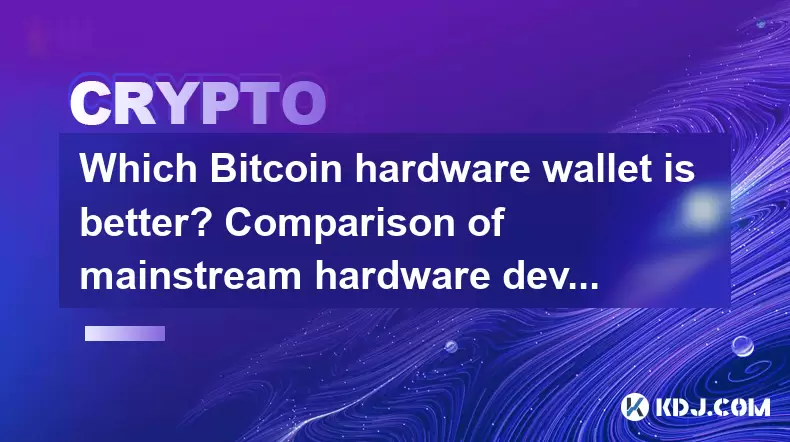
Which Bitcoin hardware wallet is better? Comparison of mainstream hardware devices
Jun 16,2025 at 02:08am
What Is a Bitcoin Hardware Wallet?A Bitcoin hardware wallet is a physical device designed to securely store the private keys associated with your cryptocurrency holdings. Unlike software wallets, which are more vulnerable to online threats, hardware wallets keep private keys offline, significantly reducing the risk of unauthorized access. These devices ...
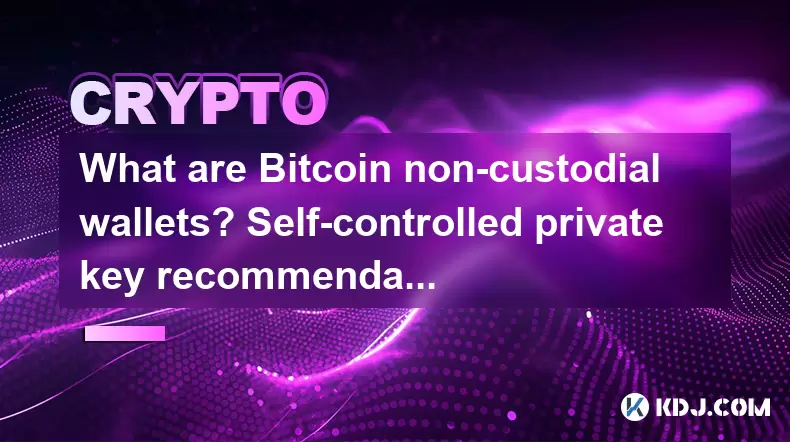
What are Bitcoin non-custodial wallets? Self-controlled private key recommendation
Jun 16,2025 at 11:29pm
Understanding Bitcoin Non-Custodial WalletsA Bitcoin non-custodial wallet is a type of digital wallet where users retain full control over their private keys. Unlike custodial wallets, which are managed by third-party services such as exchanges, non-custodial wallets ensure that only the user can access and manage their funds. This means no intermediary...
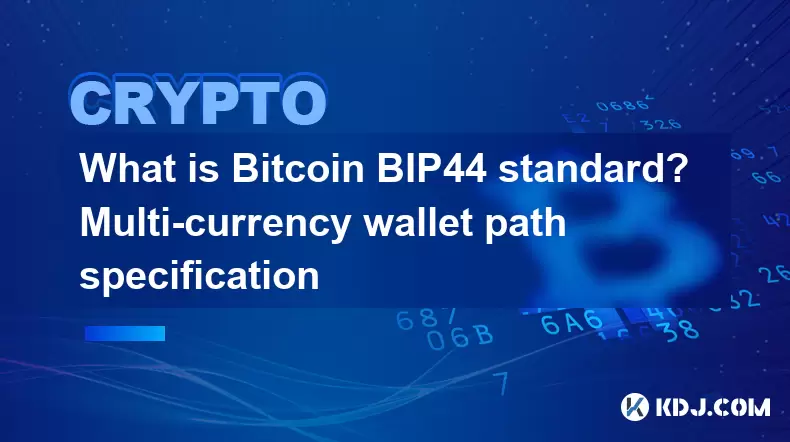
What is Bitcoin BIP44 standard? Multi-currency wallet path specification
Jun 15,2025 at 04:08pm
Understanding the BIP44 Standard in Bitcoin and CryptocurrencyThe BIP44 standard, which stands for Bitcoin Improvement Proposal 44, is a widely adopted hierarchical deterministic wallet structure used across various cryptocurrencies. It defines a structured path format that enables wallets to support multiple currencies while maintaining consistency and...
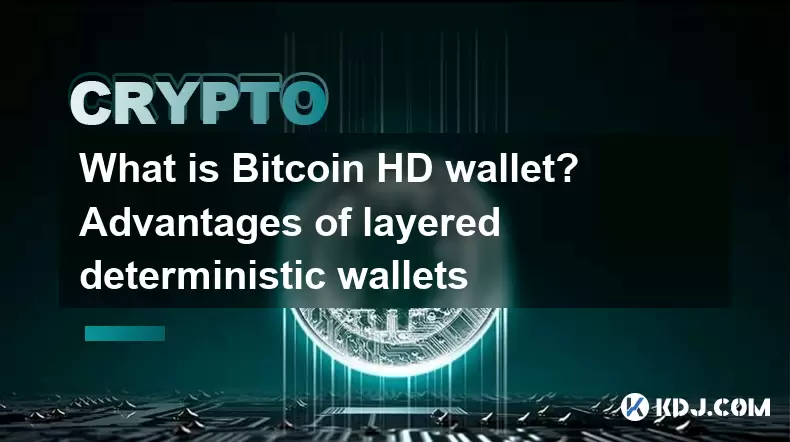
What is Bitcoin HD wallet? Advantages of layered deterministic wallets
Jun 16,2025 at 03:56pm
Understanding Bitcoin HD WalletsA Bitcoin HD wallet, or Hierarchical Deterministic wallet, is a type of cryptocurrency wallet that generates multiple keys and addresses from a single seed phrase. Unlike traditional wallets that create random private keys for each transaction, an HD wallet follows a structured hierarchy to derive keys in a deterministic ...

Is Bitcoin zero-confirmation transaction risky? Zero-confirmation usage scenarios
Jun 15,2025 at 03:57am
Understanding Zero-Confirmation Transactions in BitcoinBitcoin zero-confirmation transactions, often referred to as 'unconfirmed transactions,' are those that have been broadcast to the network but have not yet been included in a block. This means they have not received any confirmations from miners. While these transactions can be useful in certain con...
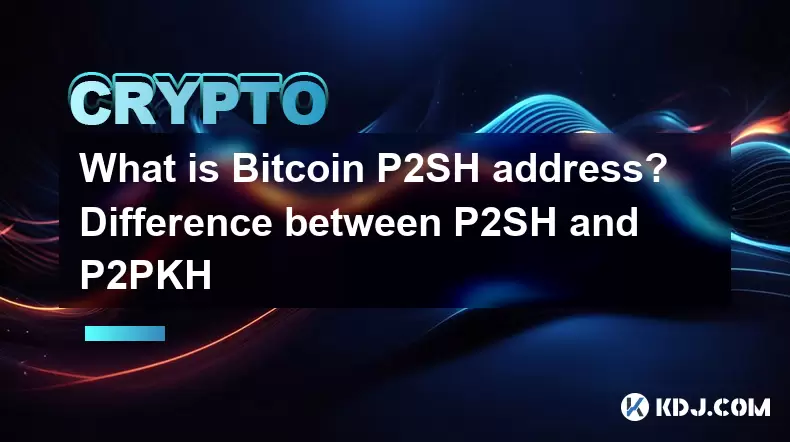
What is Bitcoin P2SH address? Difference between P2SH and P2PKH
Jun 16,2025 at 09:49pm
Understanding Bitcoin P2SH AddressesA Pay-to-Script-Hash (P2SH) address in the Bitcoin network is a type of address that allows users to send funds to a script hash rather than directly to a public key hash, as seen in earlier address formats. This innovation was introduced through BIP 16, enhancing flexibility and enabling more complex transaction type...

Which Bitcoin hardware wallet is better? Comparison of mainstream hardware devices
Jun 16,2025 at 02:08am
What Is a Bitcoin Hardware Wallet?A Bitcoin hardware wallet is a physical device designed to securely store the private keys associated with your cryptocurrency holdings. Unlike software wallets, which are more vulnerable to online threats, hardware wallets keep private keys offline, significantly reducing the risk of unauthorized access. These devices ...

What are Bitcoin non-custodial wallets? Self-controlled private key recommendation
Jun 16,2025 at 11:29pm
Understanding Bitcoin Non-Custodial WalletsA Bitcoin non-custodial wallet is a type of digital wallet where users retain full control over their private keys. Unlike custodial wallets, which are managed by third-party services such as exchanges, non-custodial wallets ensure that only the user can access and manage their funds. This means no intermediary...

What is Bitcoin BIP44 standard? Multi-currency wallet path specification
Jun 15,2025 at 04:08pm
Understanding the BIP44 Standard in Bitcoin and CryptocurrencyThe BIP44 standard, which stands for Bitcoin Improvement Proposal 44, is a widely adopted hierarchical deterministic wallet structure used across various cryptocurrencies. It defines a structured path format that enables wallets to support multiple currencies while maintaining consistency and...

What is Bitcoin HD wallet? Advantages of layered deterministic wallets
Jun 16,2025 at 03:56pm
Understanding Bitcoin HD WalletsA Bitcoin HD wallet, or Hierarchical Deterministic wallet, is a type of cryptocurrency wallet that generates multiple keys and addresses from a single seed phrase. Unlike traditional wallets that create random private keys for each transaction, an HD wallet follows a structured hierarchy to derive keys in a deterministic ...

Is Bitcoin zero-confirmation transaction risky? Zero-confirmation usage scenarios
Jun 15,2025 at 03:57am
Understanding Zero-Confirmation Transactions in BitcoinBitcoin zero-confirmation transactions, often referred to as 'unconfirmed transactions,' are those that have been broadcast to the network but have not yet been included in a block. This means they have not received any confirmations from miners. While these transactions can be useful in certain con...

What is Bitcoin P2SH address? Difference between P2SH and P2PKH
Jun 16,2025 at 09:49pm
Understanding Bitcoin P2SH AddressesA Pay-to-Script-Hash (P2SH) address in the Bitcoin network is a type of address that allows users to send funds to a script hash rather than directly to a public key hash, as seen in earlier address formats. This innovation was introduced through BIP 16, enhancing flexibility and enabling more complex transaction type...
See all articles

























































































